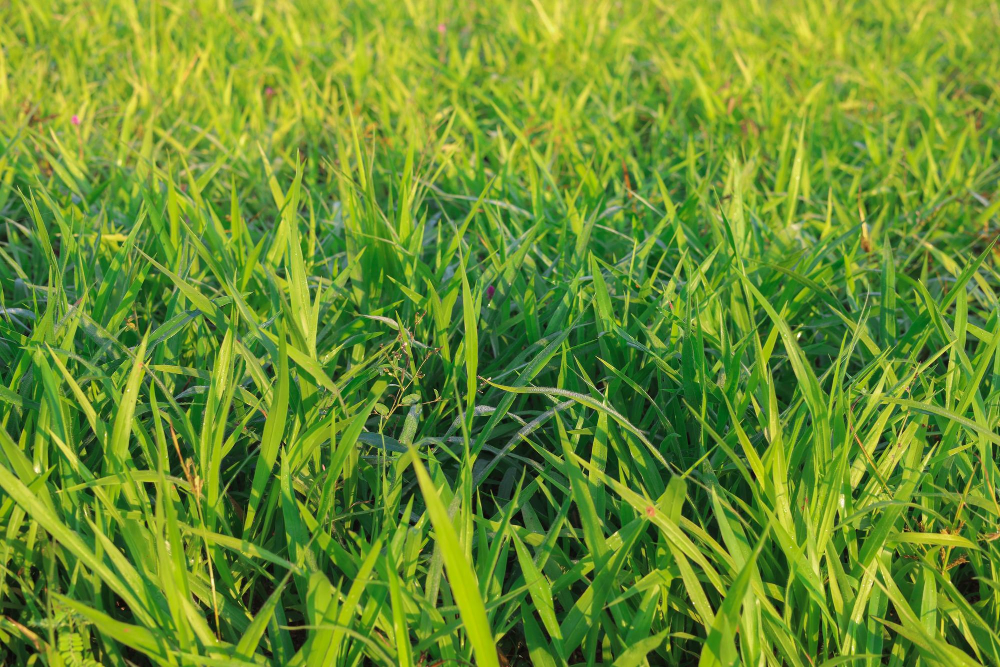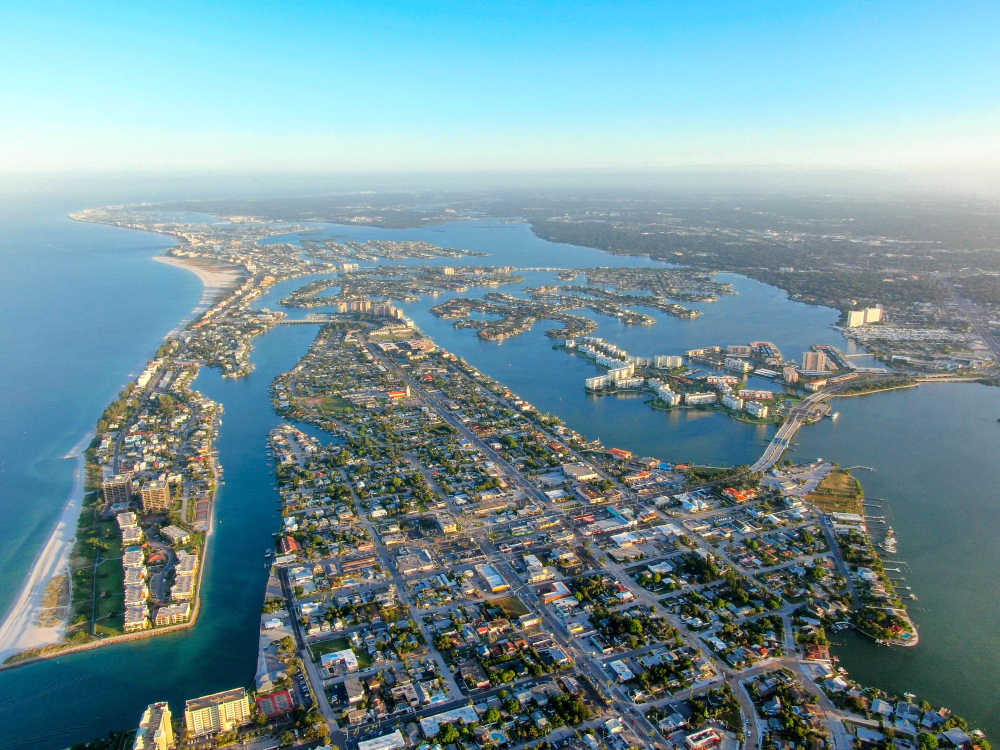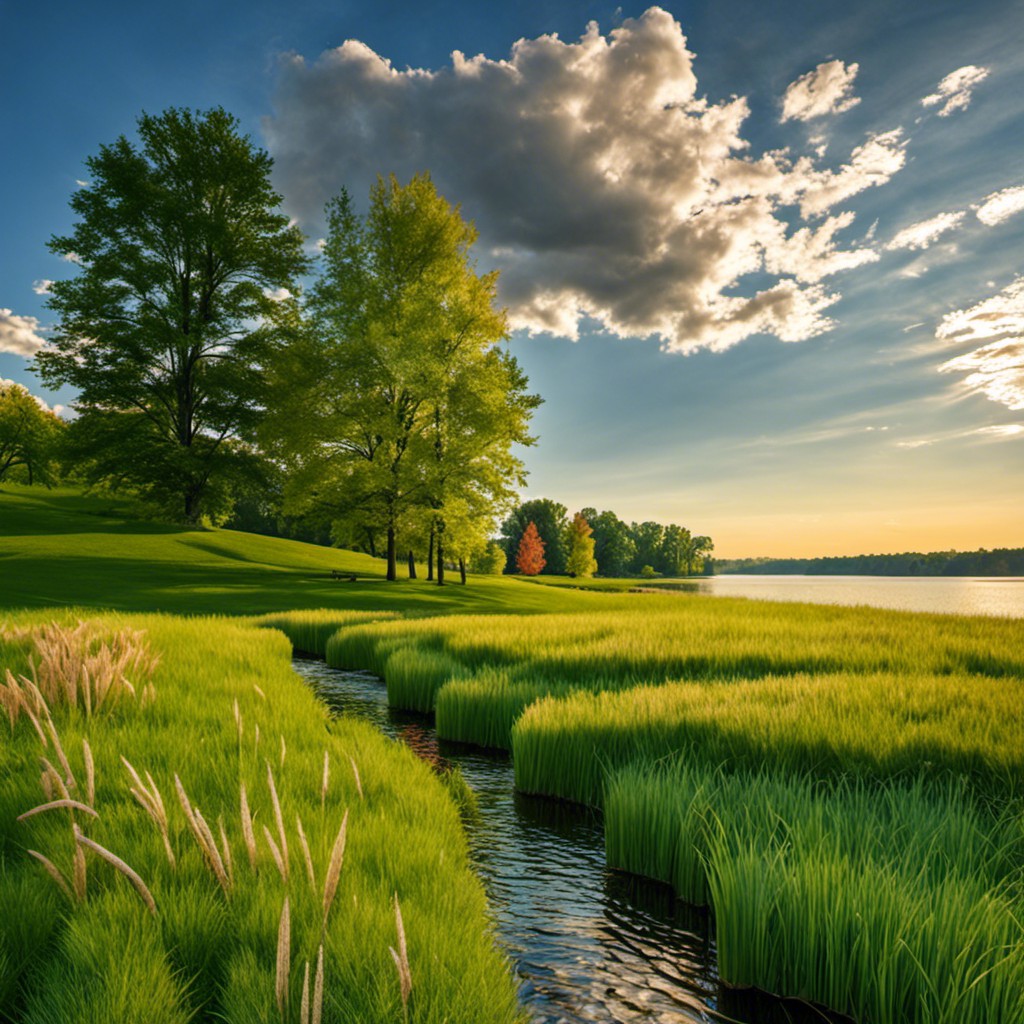Last updated on
Discover sustainable and low-maintenance grass alternatives in Utah that will transform your lawn into an eco-friendly paradise.
Welcome to my latest blog post where I will be discussing an alternative way to create a beautiful lawn without breaking the bank. If you live in Utah, you know that maintaining a lush green lawn can be challenging due to the dry climate and water restrictions.
However, there are several grass alternatives that can give your yard a unique and stunning look while also being environmentally friendly. In this article, I will share with you some of the best grass alternatives for Utah and provide tips on how to maintain them.
So, whether you’re looking for a low-maintenance option or want to add some texture and color to your yard, keep reading!
Grass Alternatives for Utah Landscapes
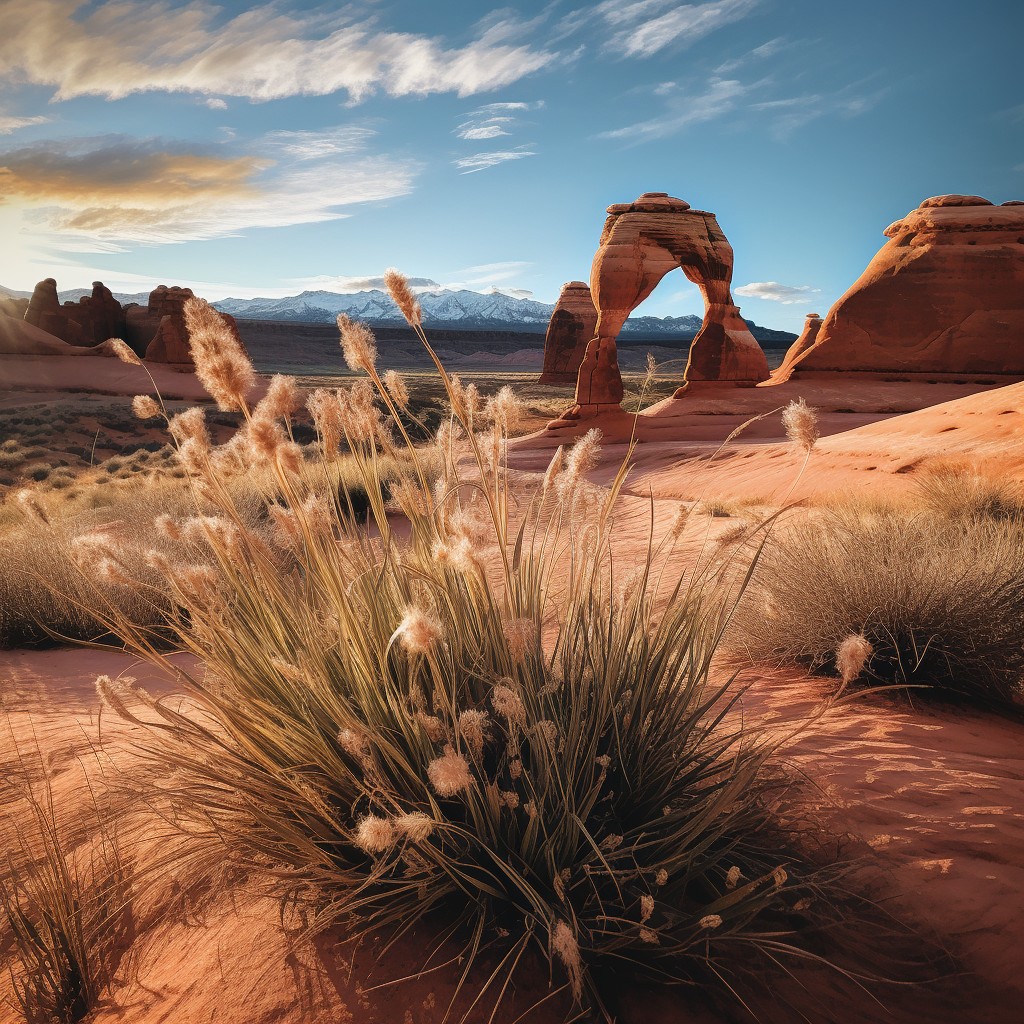
If you’re tired of the constant maintenance and high water bills that come with a traditional grass lawn, then it’s time to consider some alternatives. Utah has a unique climate that can make growing grass difficult, but there are plenty of other options available.
One popular choice is xeriscaping, which involves using plants that require little to no irrigation. This method not only saves water but also reduces your overall landscaping costs.
Another option is artificial turf, which looks just like real grass without any of the upkeep or watering requirements. Artificial turf comes in various shades and textures so you can choose one that matches your aesthetic preferences.
For those who still want greenery in their yard but don’t want to deal with mowing or watering regularly, groundcovers are an excellent alternative. Native Utah groundcovers such as creeping phlox and blue grama grass provide year-round coverage while requiring minimal maintenance.
Utah Climate Considerations
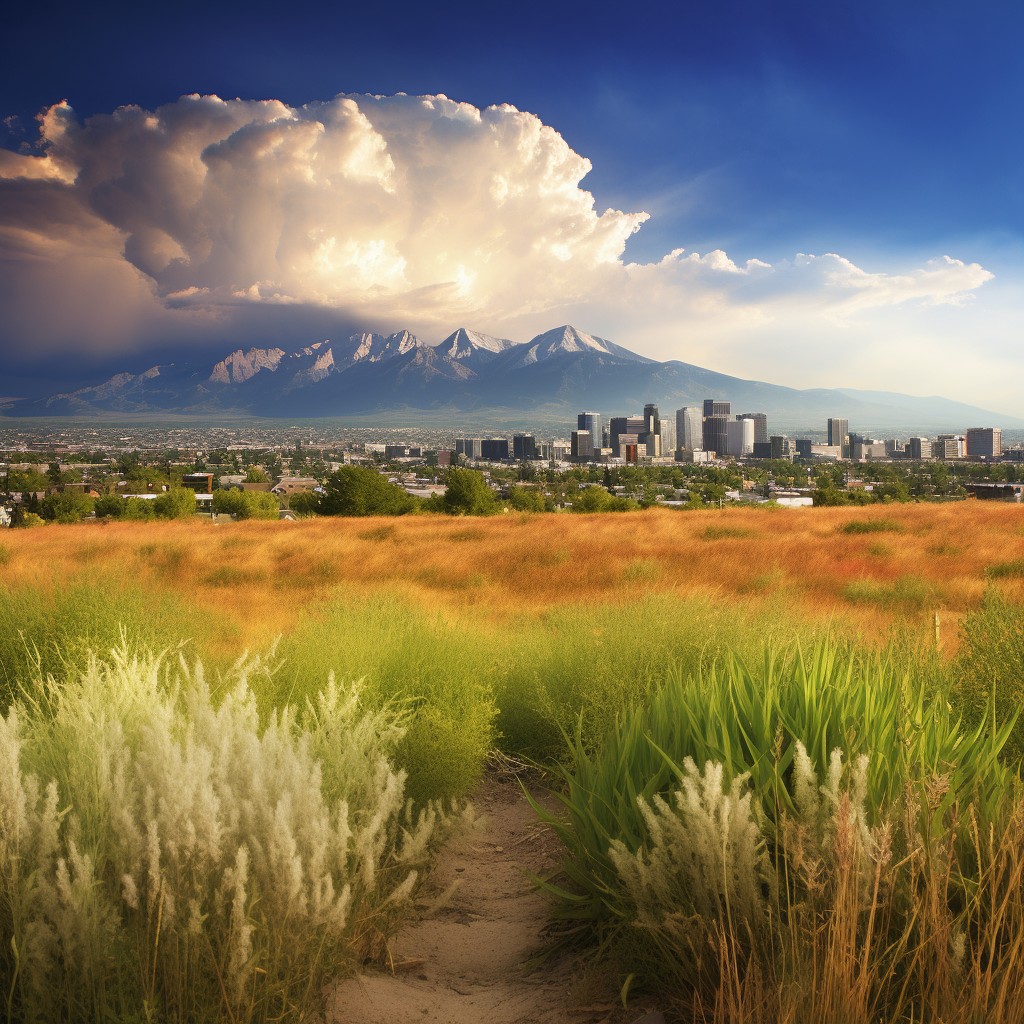
The state has a semi-arid to arid climate, with hot summers and cold winters. This means that water conservation is essential, especially during the summer months when temperatures can reach over 100 degrees Fahrenheit.
When considering grass alternatives for your Utah lawn, it’s important to keep in mind the specific conditions of your area. Some groundcovers may thrive in one part of Utah but struggle in another due to differences in soil type or elevation.
Many areas of Utah experience drought conditions regularly which makes it difficult for traditional lawns to survive without constant watering. Choosing plants that are native or adapted to this environment will help ensure their success while also reducing water usage.
Drought-Tolerant Grasses
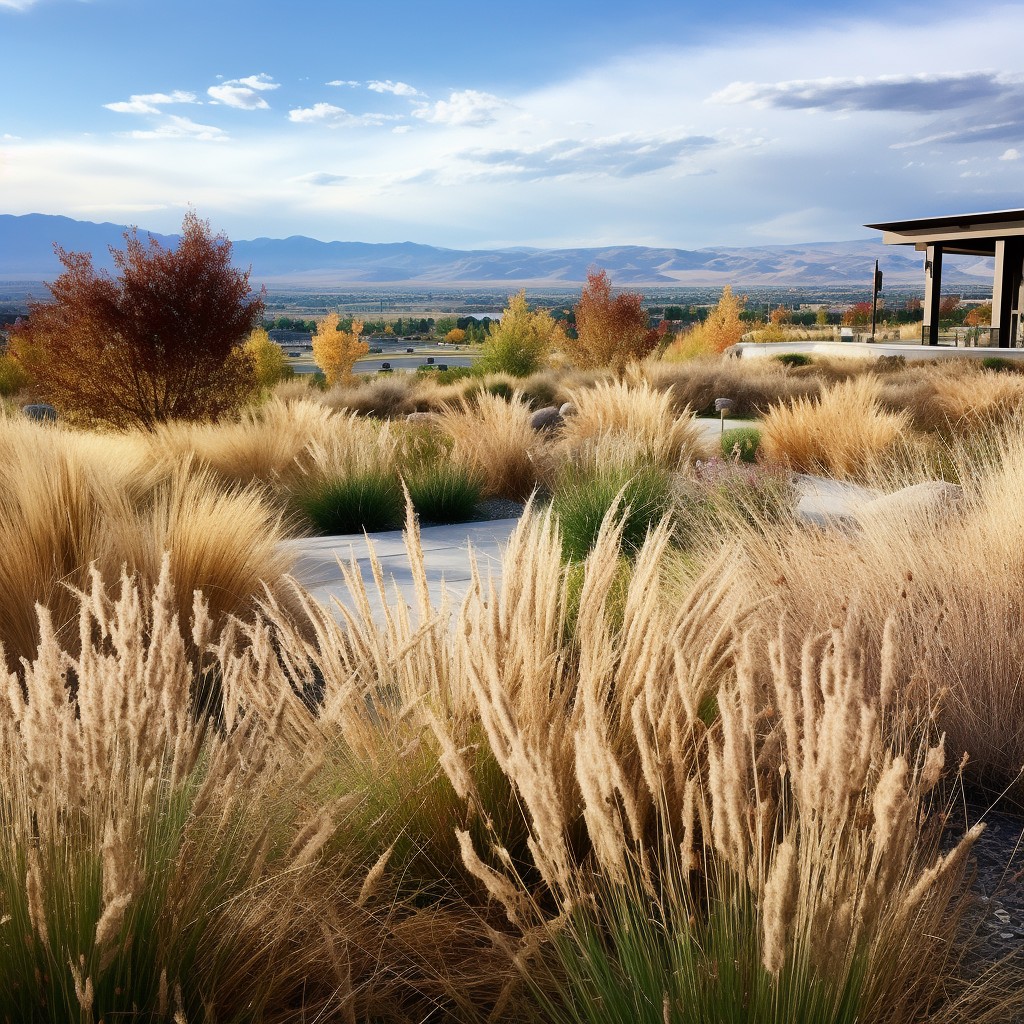
However, there are several drought-tolerant grasses that can withstand the harsh conditions while still providing an attractive look for your yard. These grasses require less watering and maintenance than traditional turfgrass, making them an excellent choice for homeowners looking to save time and money.
Some of the best drought-tolerant grass options include buffalo grass, blue grama grass, and tall fescue. Buffalo Grass is native to Utah’s prairies; it has fine blades with a soft texture that creates a beautiful carpet-like appearance when mowed short regularly.
Blue Grama Grass is another native option with thin leaves in shades of blue-green or gray-green coloration; this type of plant forms dense mats over time which makes it ideal as ground cover on slopes or hillsides where erosion control may be necessary.
Tall Fescue is not native but grows well in Utah due to its deep root system which allows it access moisture from deeper soil layers during periods without rainfalls; this type also tolerates shade better than other varieties making them suitable under trees or near buildings where sunlight may be limited.
Native Utah Groundcovers
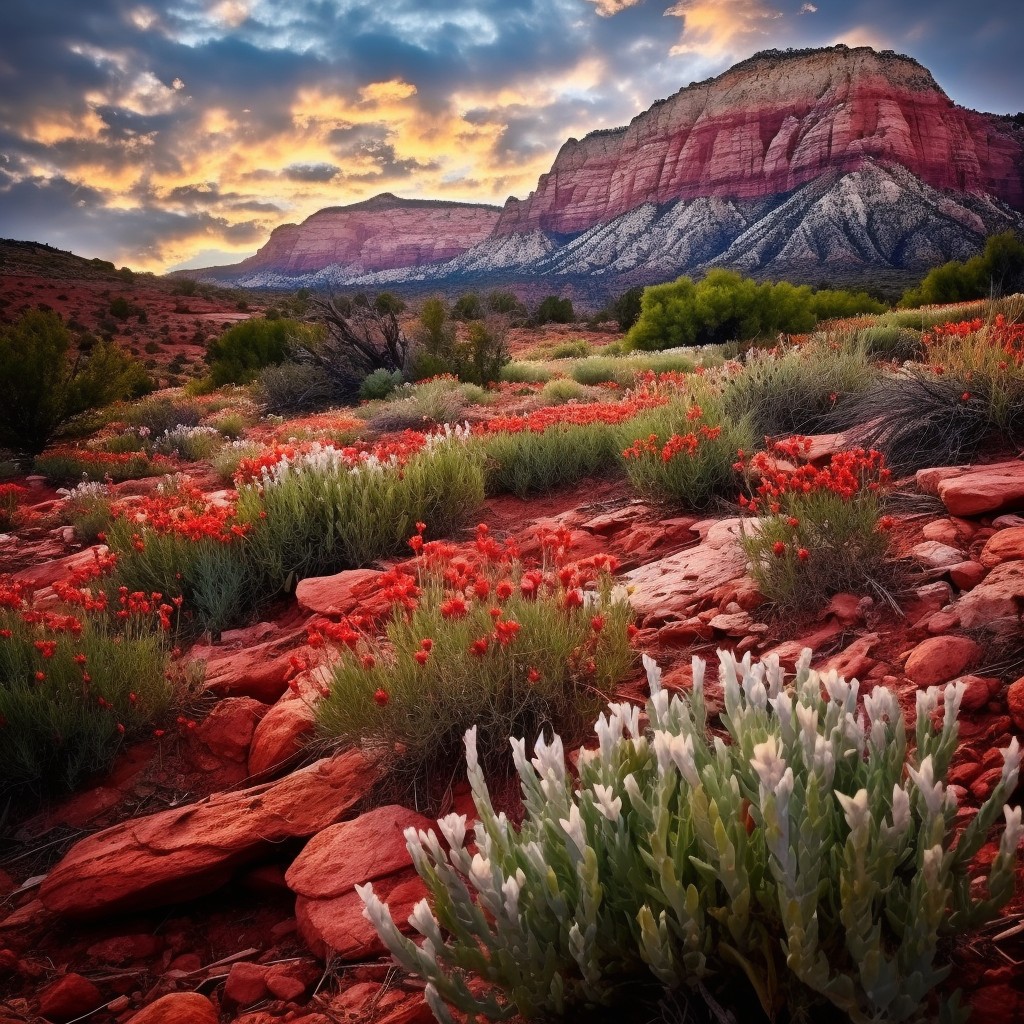
These plants are adapted to the local climate, making them drought-tolerant and low-maintenance. They also provide habitat for native wildlife, such as bees and butterflies.
One of the most popular native groundcovers in Utah is Blue Grama Grass (Bouteloua gracilis). This grass is known for its blue-green coloration that turns golden brown in the fall.
It’s a warm-season grass that thrives in hot, dry conditions and requires little water once established.
Another great option is Creeping Oregon Grape (Mahonia repens), which has glossy green leaves that turn red or purple in winter. This evergreen shrub produces yellow flowers followed by blue-black berries loved by birds.
Utah Serviceberry (Amelanchier utahensis) is another fantastic choice with white flowers blooming from March through May followed by edible fruit enjoyed by humans as well as wildlife.
Perennial Groundcover Choices
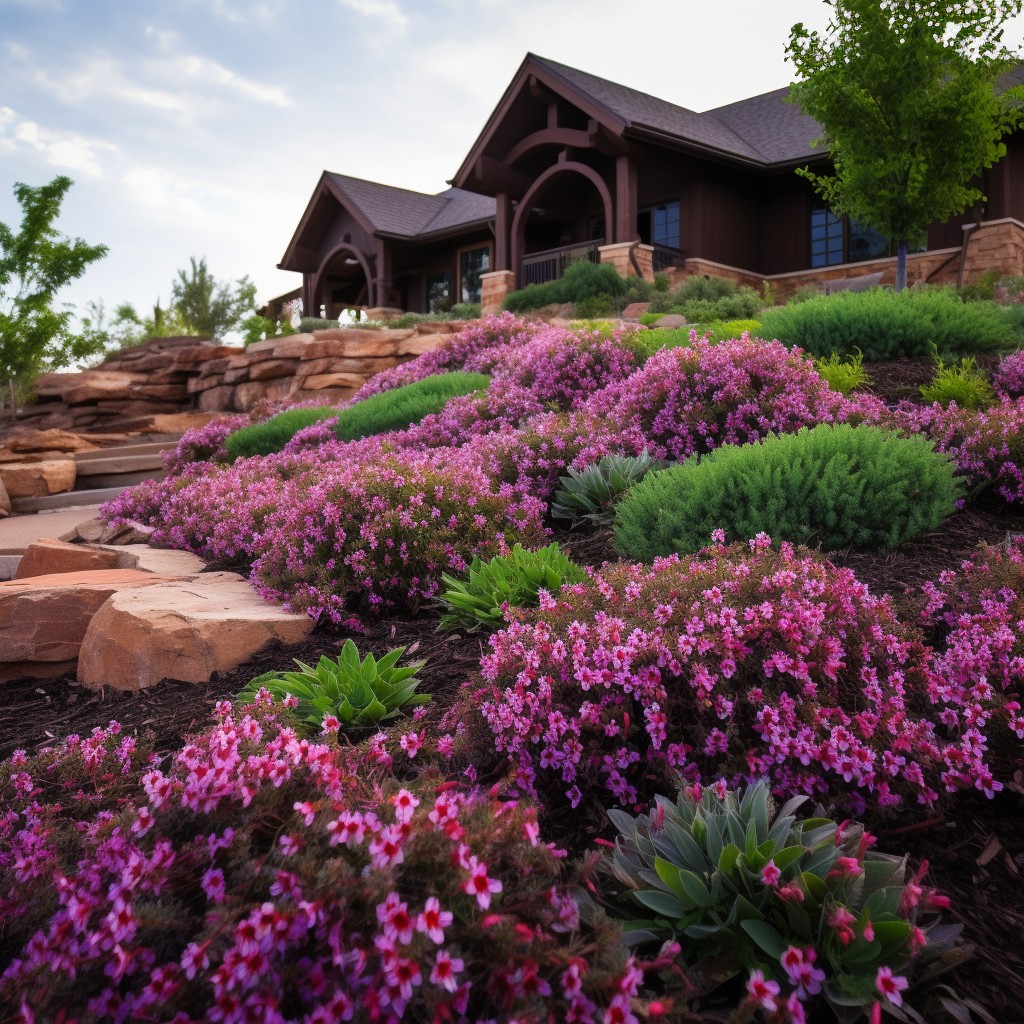
These plants are low-growing, spread quickly, and require minimal maintenance once established. In Utah’s dry climate, it is essential to choose a drought-tolerant perennial that can withstand hot summers and cold winters.
One popular option is the creeping phlox (Phlox subulata), which produces beautiful pink or purple flowers in early spring. Another great choice is the ice plant (Delosperma cooperi), which has succulent leaves that turn bright pink when in bloom during summer months.
For shady areas, consider planting ajuga (Ajuga reptans) with its glossy green leaves and blue-purple flowers or sweet woodruff (Galium odoratum) with its delicate white blooms.
When selecting perennial groundcovers for your yard, be sure to research each plant’s specific needs regarding sunlight exposure and soil type before making your final decision.
Creeping Thyme Varieties
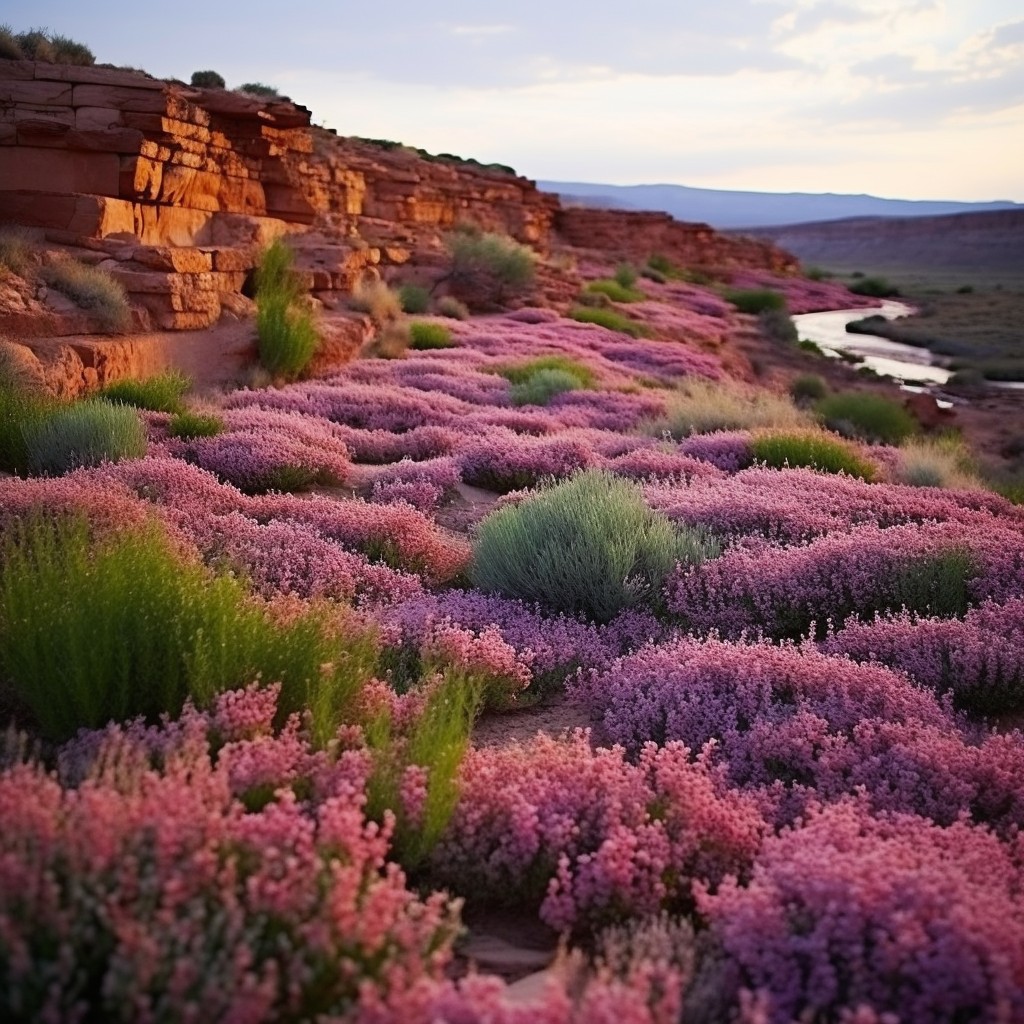
This low-growing plant has fragrant leaves and produces small, delicate flowers in shades of pink, purple, or white. Creeping thyme varieties are perfect for Utah’s dry climate as they require little water once established.
One of the most significant benefits of creeping thyme is its ability to attract pollinators such as bees and butterflies. These insects play a crucial role in maintaining healthy ecosystems by pollinating plants that produce food for humans and animals alike.
When selecting creeping thyme varieties for your lawn, consider factors such as sun exposure, soil type, and maintenance requirements. Some popular options include Elfin Thyme (Thymus serpyllum ‘Elfin’), Woolly Thyme (Thymus pseudolanuginosus), Mother-of-Thymes (Thymus praecox subsp.), Lemon Thymes (Thymus citriodorus), among others.
In addition to being drought-tolerant and easy-to-maintain groundcovers; creeping thymes also make excellent additions to rock gardens or planted between stepping stones on walkways due their spreading habit which creates an attractive carpet-like effect over time.
Sedum Plant Varieties
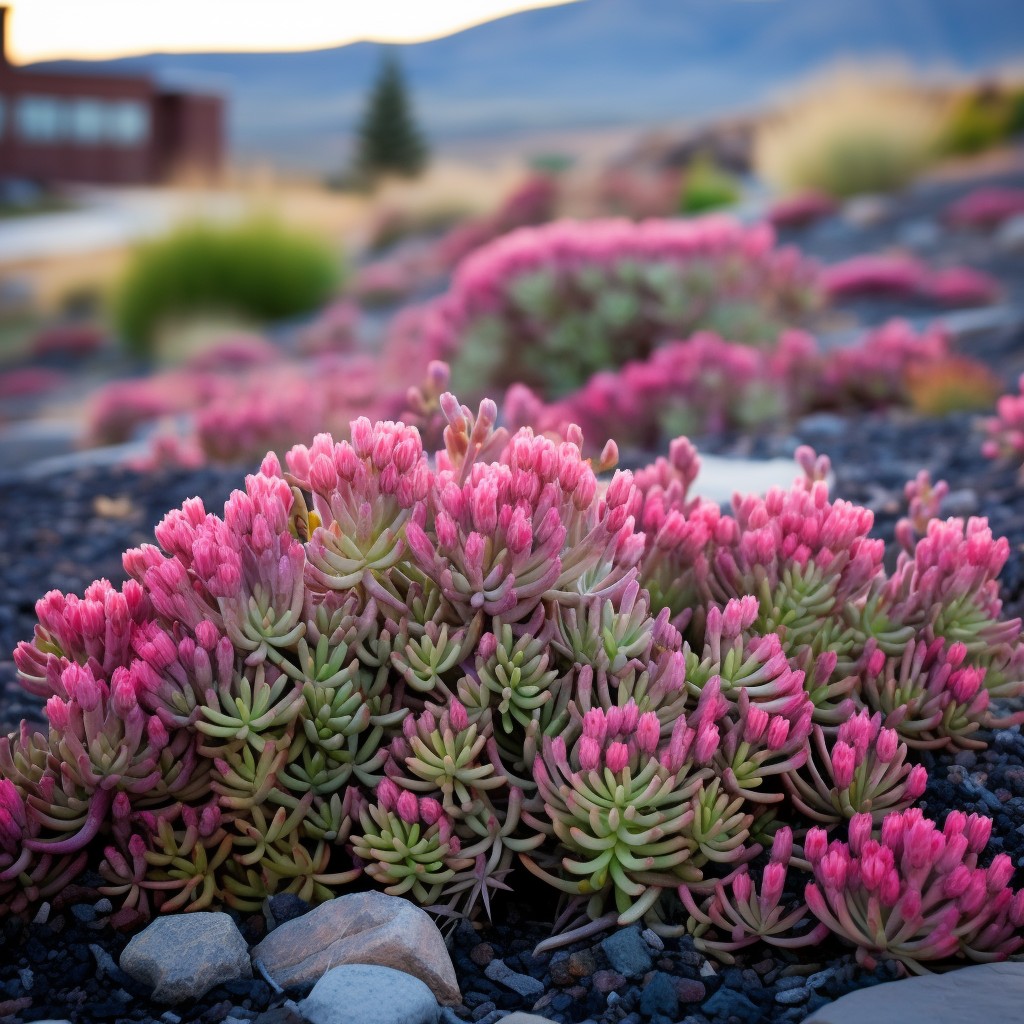
These succulent plants come in various shapes, sizes, and colors, making them an excellent option for ground cover or as accents in rock gardens. Sedums require little maintenance and can thrive in Utah’s dry climate.
Some of the most common sedum varieties include Dragon’s Blood Sedum with its deep red foliage that turns green during summer months; Blue Spruce Sedum with its blue-green needle-like leaves; Autumn Joy Sedum which blooms pink flowers during late summer through fall; Angelina Stonecrop which has yellow-green foliage that turns orange-red during winter months.
When planting sedums, it is essential to choose a well-draining soil mix as they do not tolerate wet feet. They also prefer full sun but can tolerate partial shade if necessary.
Once established, these hardy plants require minimal watering and care.
Ornamental Grass Selection
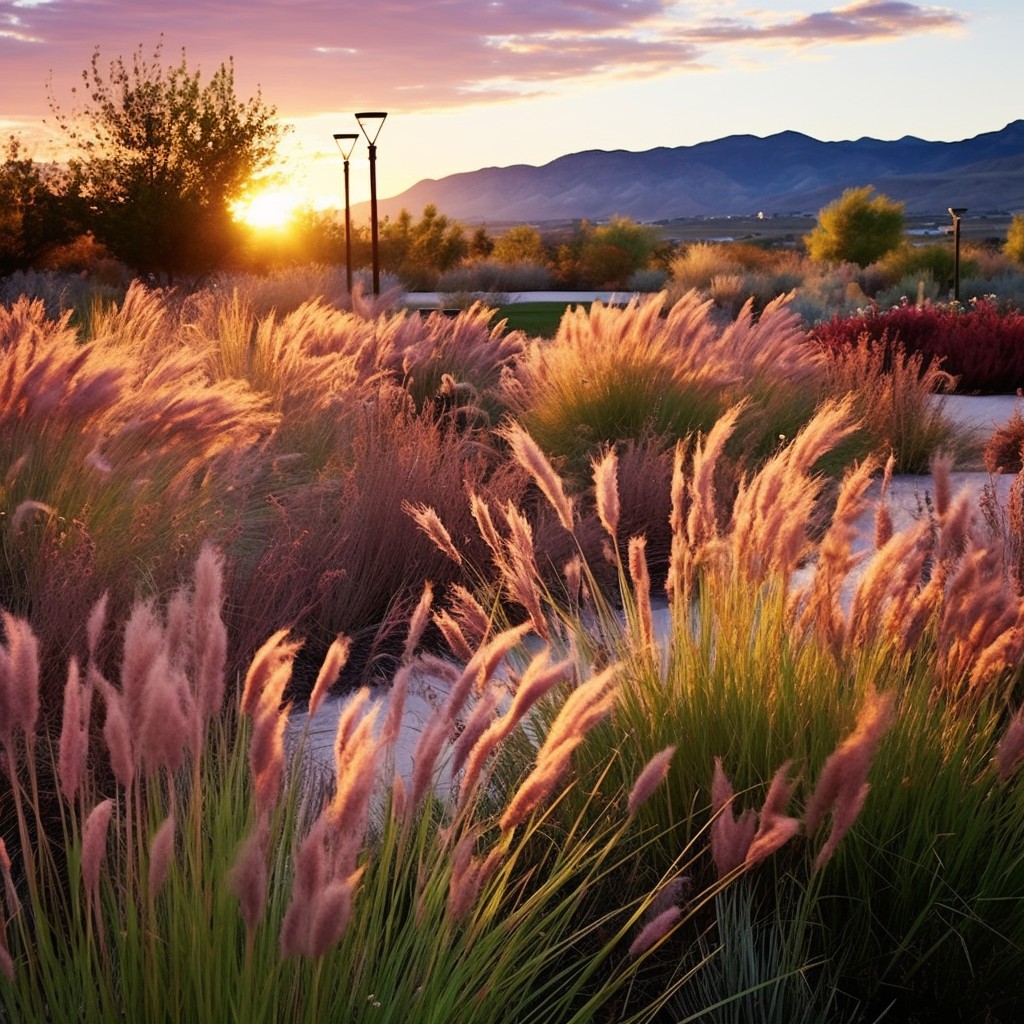
These grasses come in various heights, colors, and textures that can complement any garden design. Some of the most common ornamental grass varieties include fountain grass, feather reedgrass, switchgrass, blue oatgrass among others.
When selecting an ornamental grass variety for your yard or garden in Utah’s dry climate conditions consider drought-tolerant options such as Blue Fescue or Mexican Feather Grass which require minimal watering once established. Other factors you should consider when choosing an ornamental plant include its growth habit (clumping vs spreading), height at maturity (short vs tall), color variation throughout the year (green vs red) and maintenance requirements.
Ornamental plants can be used as borders along walkways or driveways; they also make great focal points when planted alone in large containers on patios or decks. They provide visual interest all year round with their unique foliage shapes and colors while requiring little maintenance compared to traditional lawns.
Artificial Turf Options
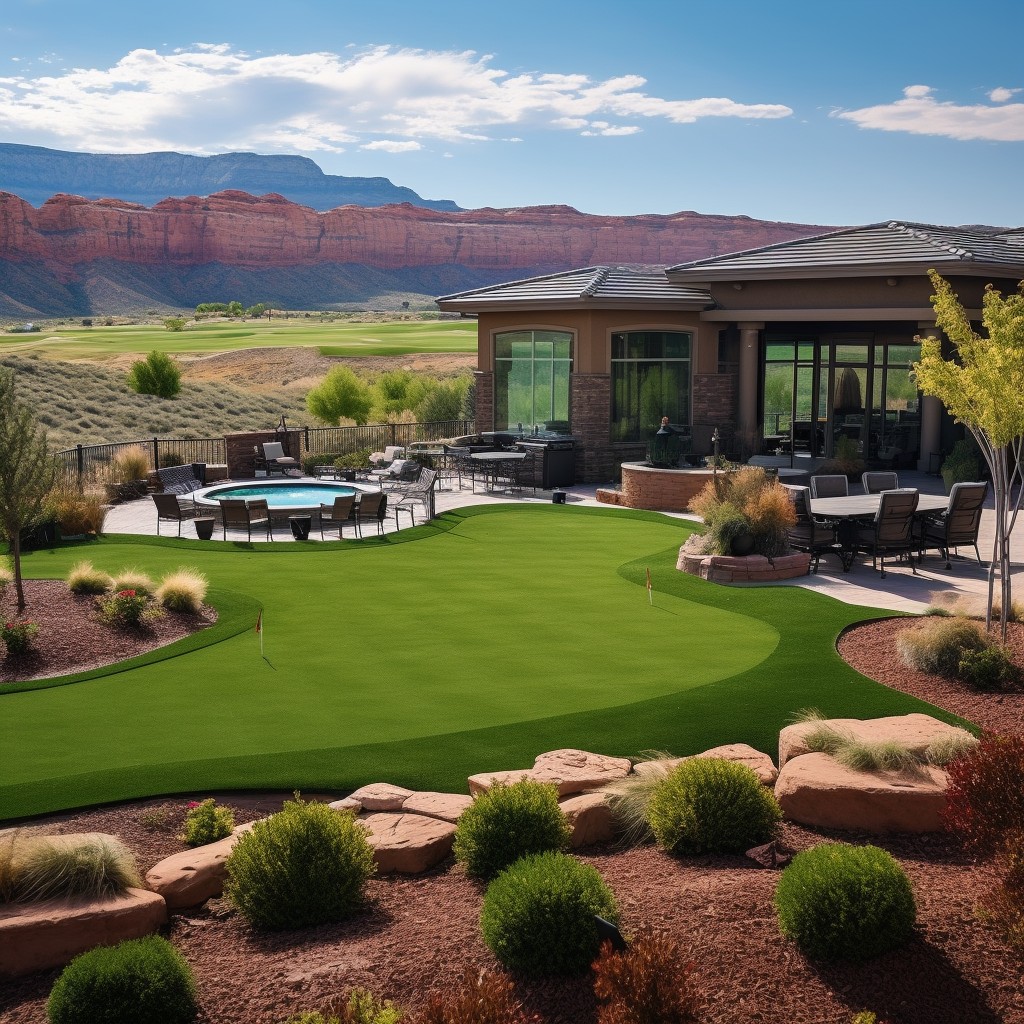
It’s also an excellent option for those who live in areas with water restrictions or have limited access to water. Artificial turf comes in various styles, from short and dense to long and lush, giving you plenty of options to choose from.
One advantage of artificial turf is that it requires minimal upkeep compared to natural grass. You don’t need to mow, fertilize or water it regularly, which saves you time and money on maintenance costs.
Another benefit is that artificial turf can withstand harsh weather conditions such as droughts or heavy rainfalls better than natural grass. It doesn’t get muddy during rainy seasons nor does it dry out during hot summers.
However, there are some downsides too; one being its high installation cost compared with other alternatives like groundcovers or ornamental plants. Synthetic materials may not be suitable for all landscapes due to their non-biodegradable nature which could cause environmental concerns over time.
Low-Maintenance Landscaping
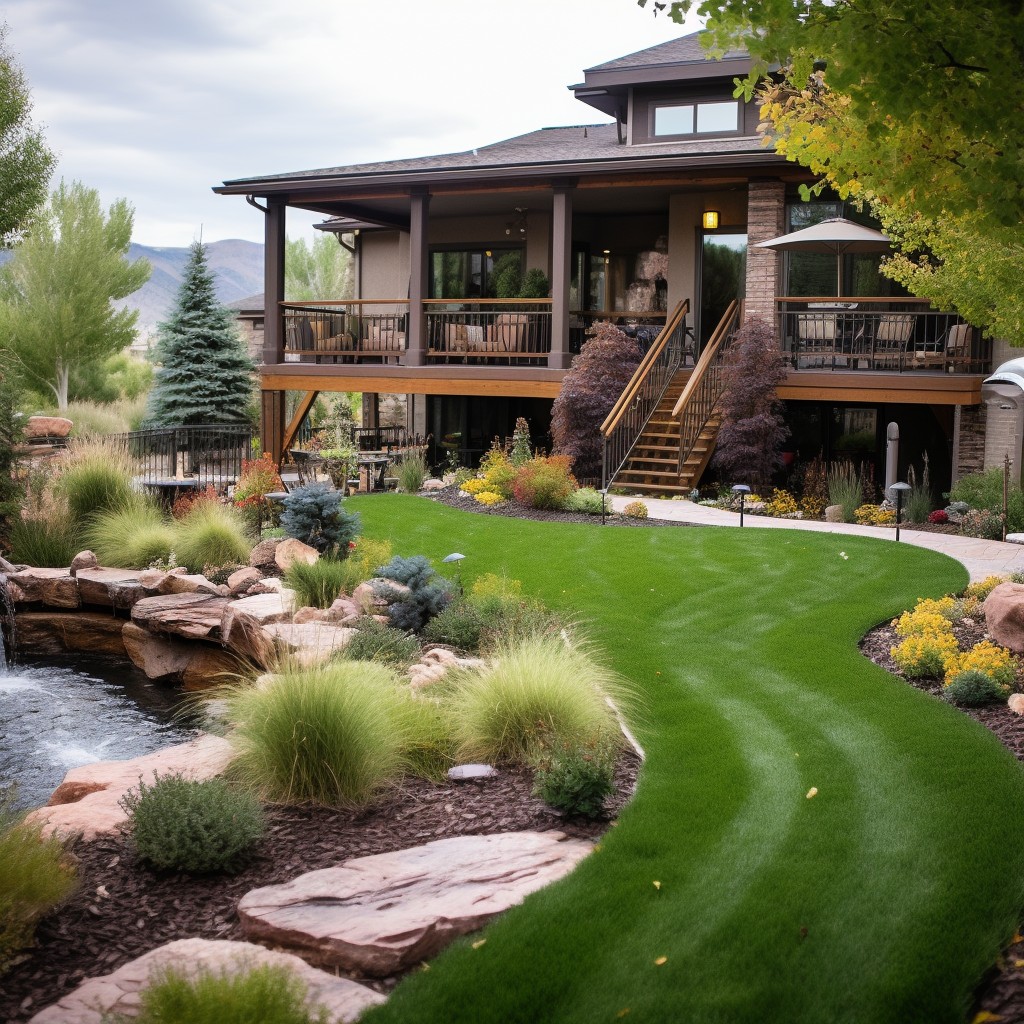
One of the most popular choices is xeriscaping, which involves using drought-tolerant plants and materials that require minimal watering. This type of landscaping can save you time and money on maintenance while also conserving water.
Another option is rock or gravel landscaping, which requires no mowing or watering at all. You can create beautiful designs with different types of rocks and stones that complement your home’s architecture.
Mulch is another great low-maintenance option that helps retain moisture in the soil while suppressing weed growth. There are many types of mulch available in Utah such as wood chips, bark nuggets, straw or even recycled rubber tires.
If you want to add some greenery without having to worry about maintaining a lawn area at all then moss gardens might be perfect for you! Mosses thrive in shady areas where grass struggles so they make an excellent groundcover choice under trees or around rocks.
Xeriscaping Principles
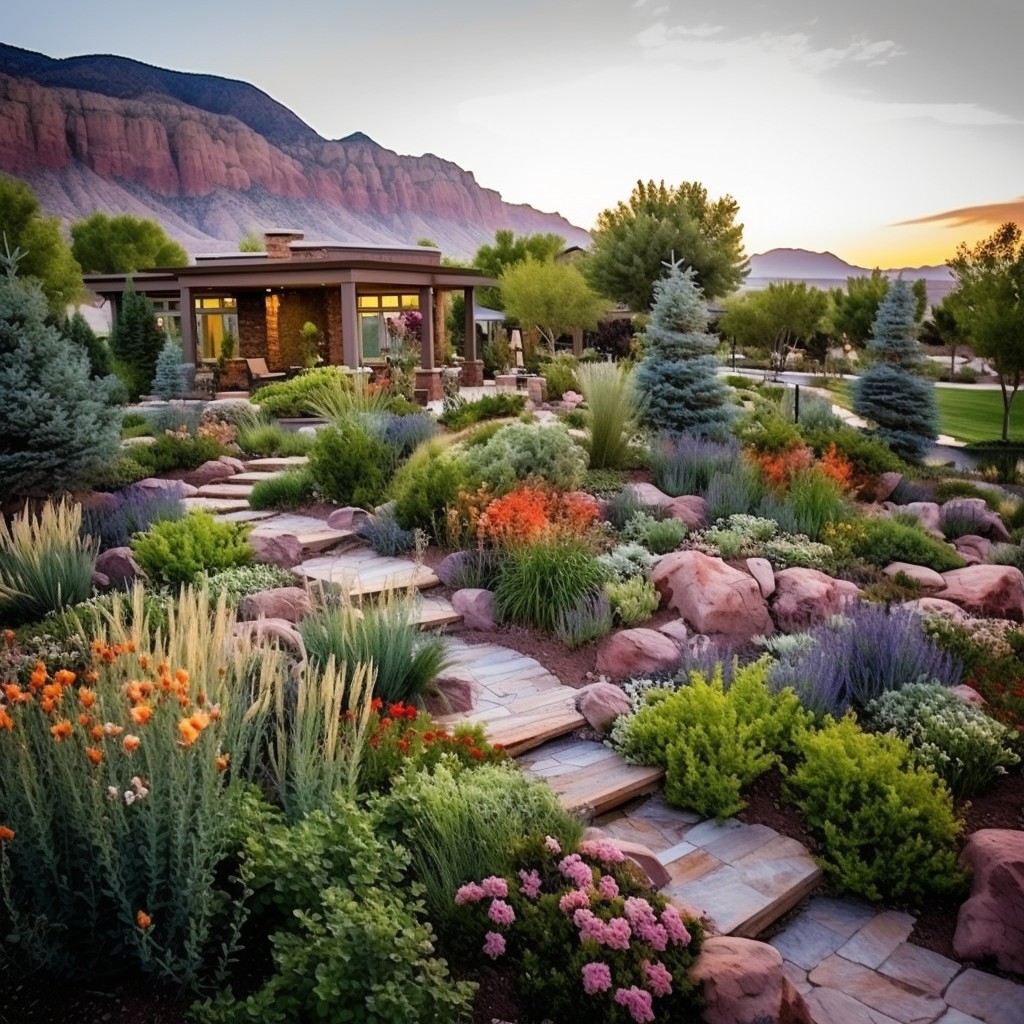
It’s an excellent option for Utah homeowners who want to create a beautiful yard while reducing their water usage. Xeriscaping principles include selecting the right plants, using efficient irrigation techniques, and incorporating hardscaping elements such as rocks or gravel.
When it comes to plant selection in xeriscaping, it’s essential to choose species that are native or adapted to Utah’s climate. These types of plants require less watering and maintenance than non-native species since they have evolved over time to survive in this environment.
Efficient irrigation techniques are also crucial in xeriscaping. Drip irrigation systems deliver water directly at the base of each plant rather than spraying large amounts across your lawn like traditional sprinklers do.
This method reduces evaporation rates and ensures that every drop counts.
Incorporating hardscaping elements into your landscape design can help reduce overall watering needs by creating areas where grass isn’t necessary or practical.
Selecting the Right Plants
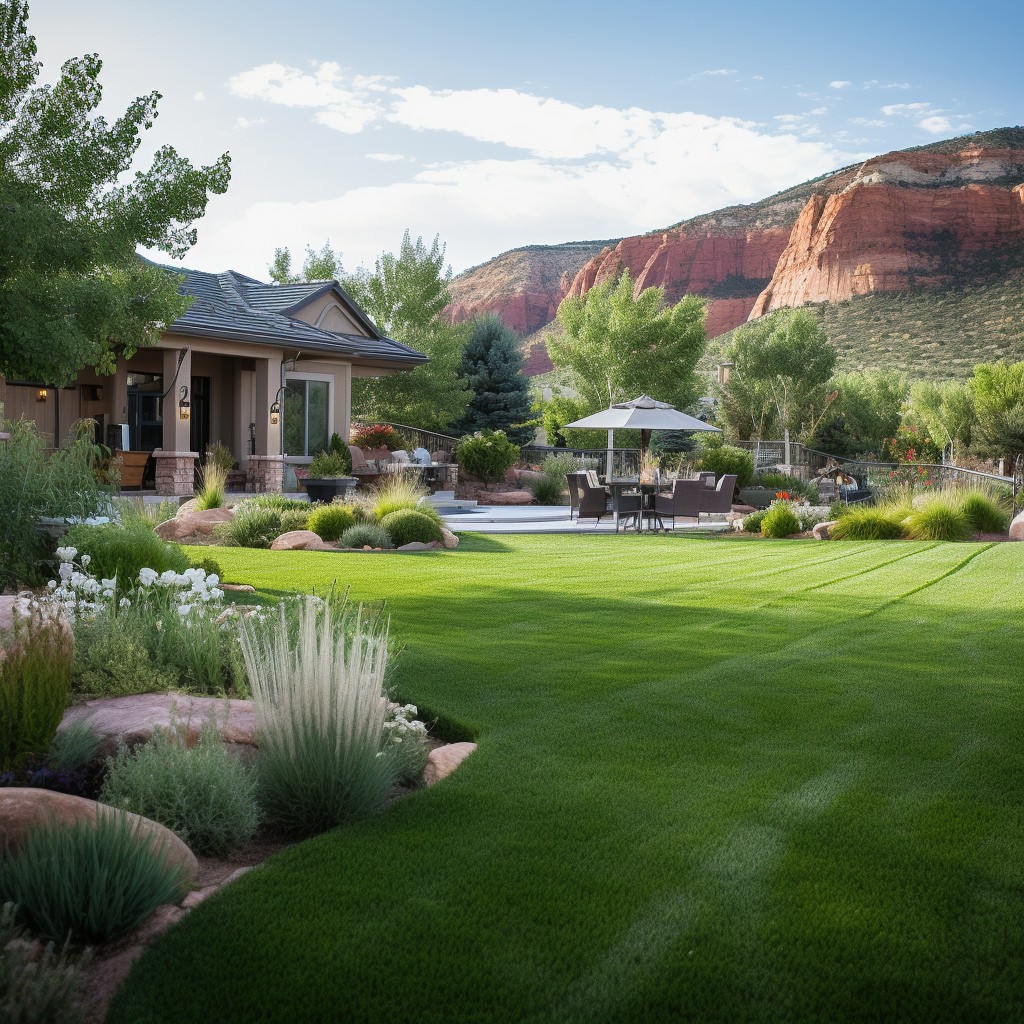
In Utah’s dry climate, drought-tolerant plants are a great option that can thrive with minimal water. Native groundcovers like buffalo grass or blue grama grass are also excellent choices as they have adapted to the local environment and require less maintenance.
Another factor to consider is sun exposure. Some plants prefer full sunlight while others do better in partial shade or even full shade.
Be sure to choose plants that match the amount of sunlight your yard receives throughout the day.
It’s also essential to select plant varieties that complement each other in terms of color and texture for an aesthetically pleasing look. For example, combining ornamental grasses with flowering perennials can create a beautiful contrast in height and texture.
Don’t forget about maintenance when selecting your plant varieties! Choose low-maintenance options if you’re looking for an easy-to-care-for lawn or garden bed.
Rock and Gravel Landscaping
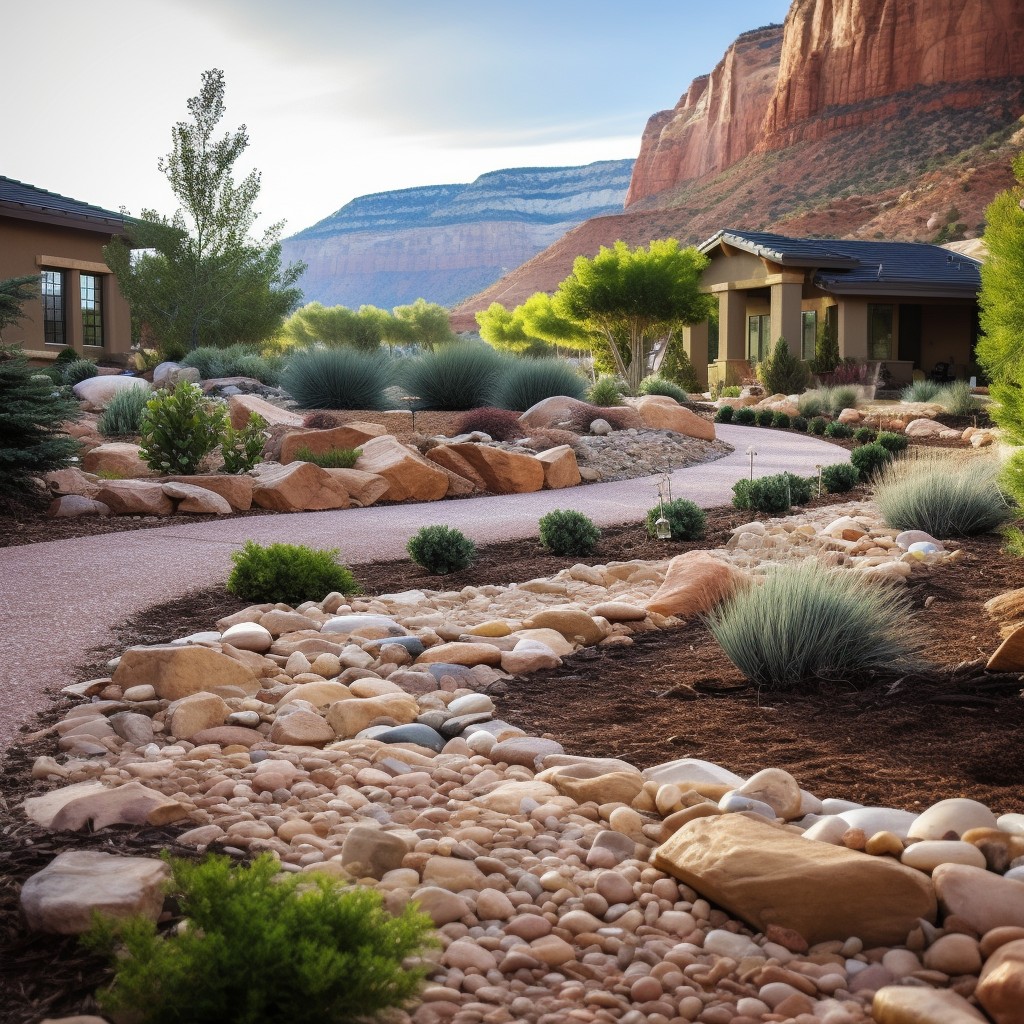
Not only is it drought-tolerant, but it also adds texture and color to your yard. In Utah’s arid climate, rocks can help retain moisture in the soil while reducing water usage.
One of the benefits of using rocks or gravel in your landscape design is that they require little maintenance once installed. Unlike grass that needs regular mowing, watering, fertilizing and weeding; rock gardens need minimal upkeep.
To create an attractive rock garden or pathway with gravel accents requires careful planning before installation begins. You’ll want to consider factors such as drainage patterns on your property so that water doesn’t pool around plants causing root rot or other problems.
When selecting stones for use in a landscape design project like this one make sure they are appropriate size-wise (not too big), shape-wise (flat enough) & color-wise (complementary).
Mulch Alternatives in Utah
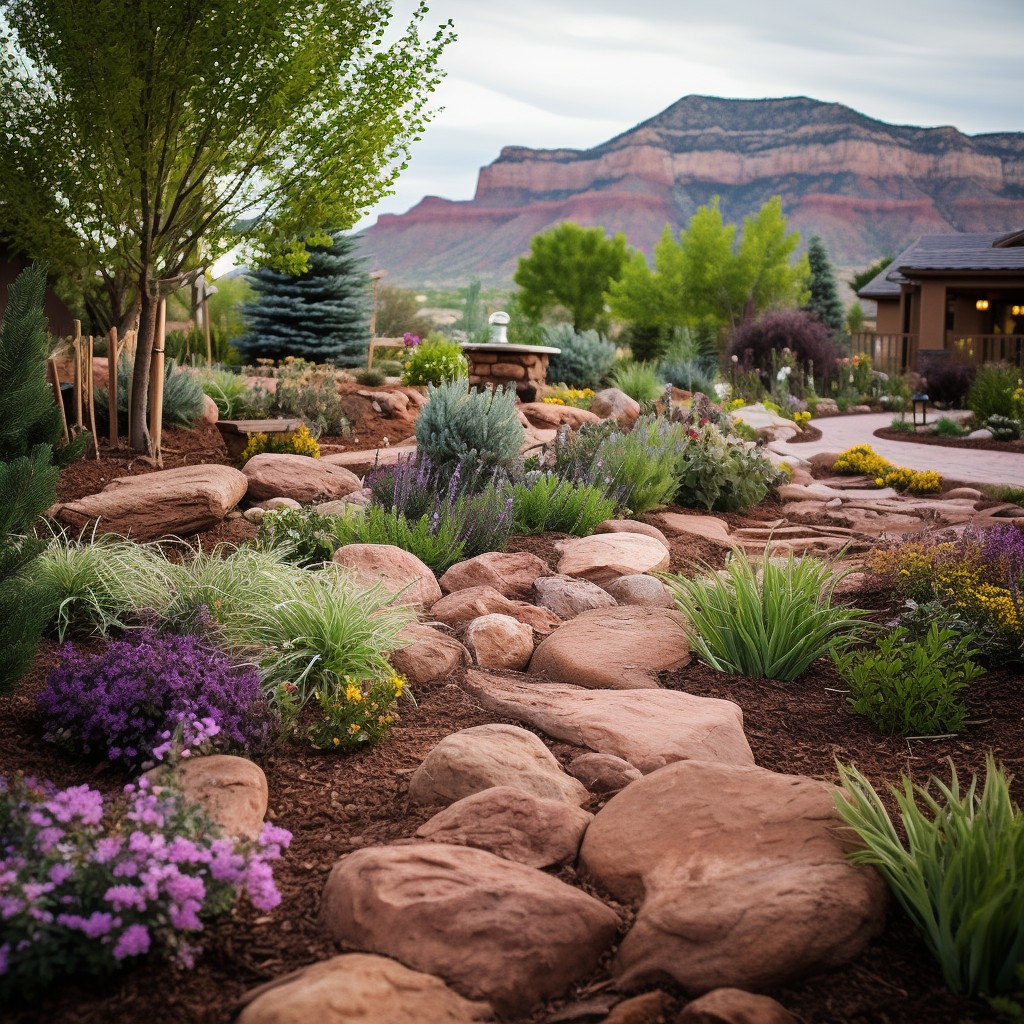
It helps to retain moisture, suppress weeds, and regulate soil temperature. However, traditional mulches like wood chips or bark can be expensive and may not be the best option for Utah’s dry climate.
Fortunately, there are several mulch alternatives that are both cost-effective and eco-friendly.
One great alternative to traditional mulch is using gravel or rocks in your landscaping design. Not only do they provide excellent drainage for plants but also add texture and color to your yard while being low maintenance.
Another option is using organic materials such as leaves or grass clippings as a natural fertilizer that will break down over time into the soil providing nutrients for plants while reducing waste from landfills.
Lastly, consider planting groundcovers instead of relying on traditional mulching methods altogether! Groundcovers like creeping thyme can help prevent erosion by holding onto water longer than other types of vegetation which makes them perfect candidates when it comes time to replace old lawns with something more sustainable!.
Benefits of Moss Gardens
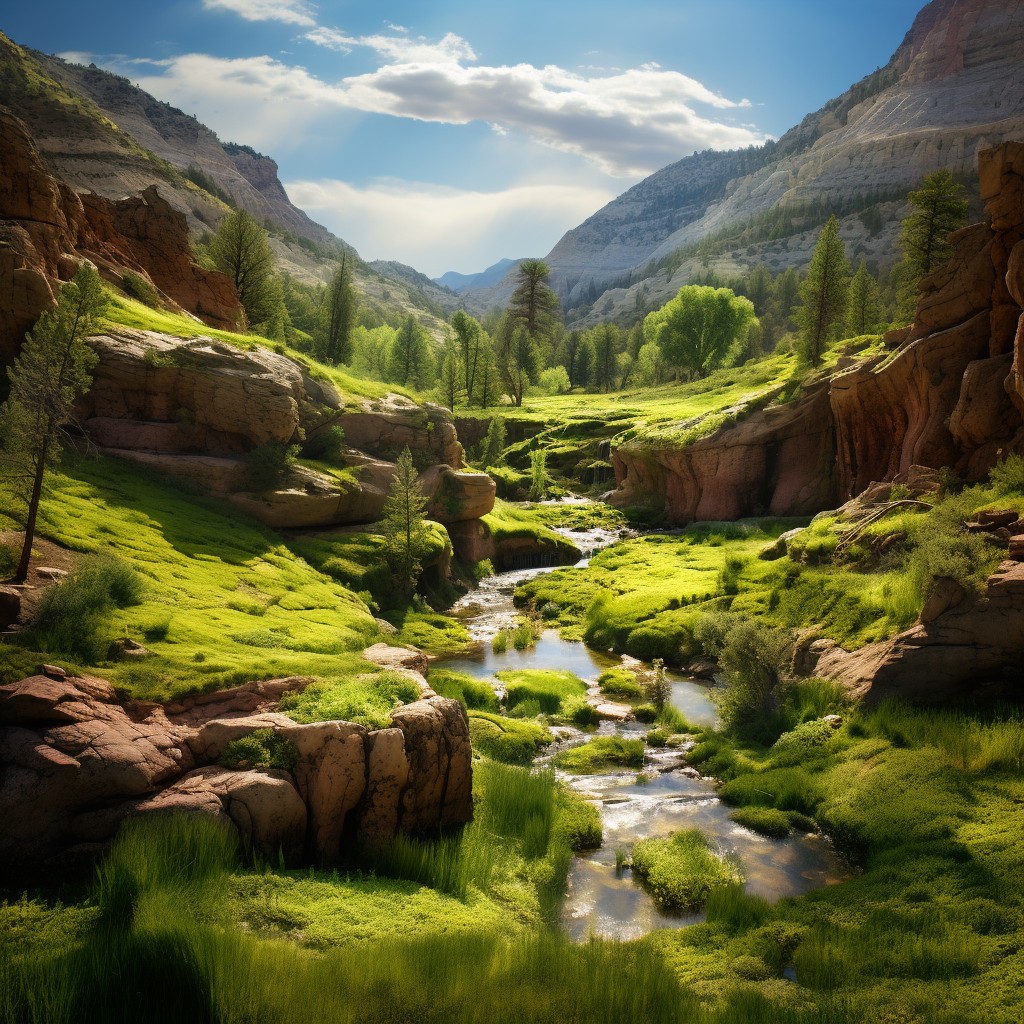
They require little maintenance, no mowing, and can thrive in shady areas where grass struggles to grow. Moss is also an excellent natural filter for rainwater runoff, which helps prevent erosion and improves water quality.
In Utah’s dry climate, moss gardens can be particularly beneficial as they do not require much watering once established. Mosses absorb carbon dioxide from the atmosphere during photosynthesis making them an eco-friendly option for your yard.
Creating a moss garden is relatively easy; all you need is some shade-loving varieties of moss that are native to Utah soil types or adapted well here with proper care. You can plant them directly into the ground or create a raised bed using rocks or logs as borders.
Irrigation Techniques
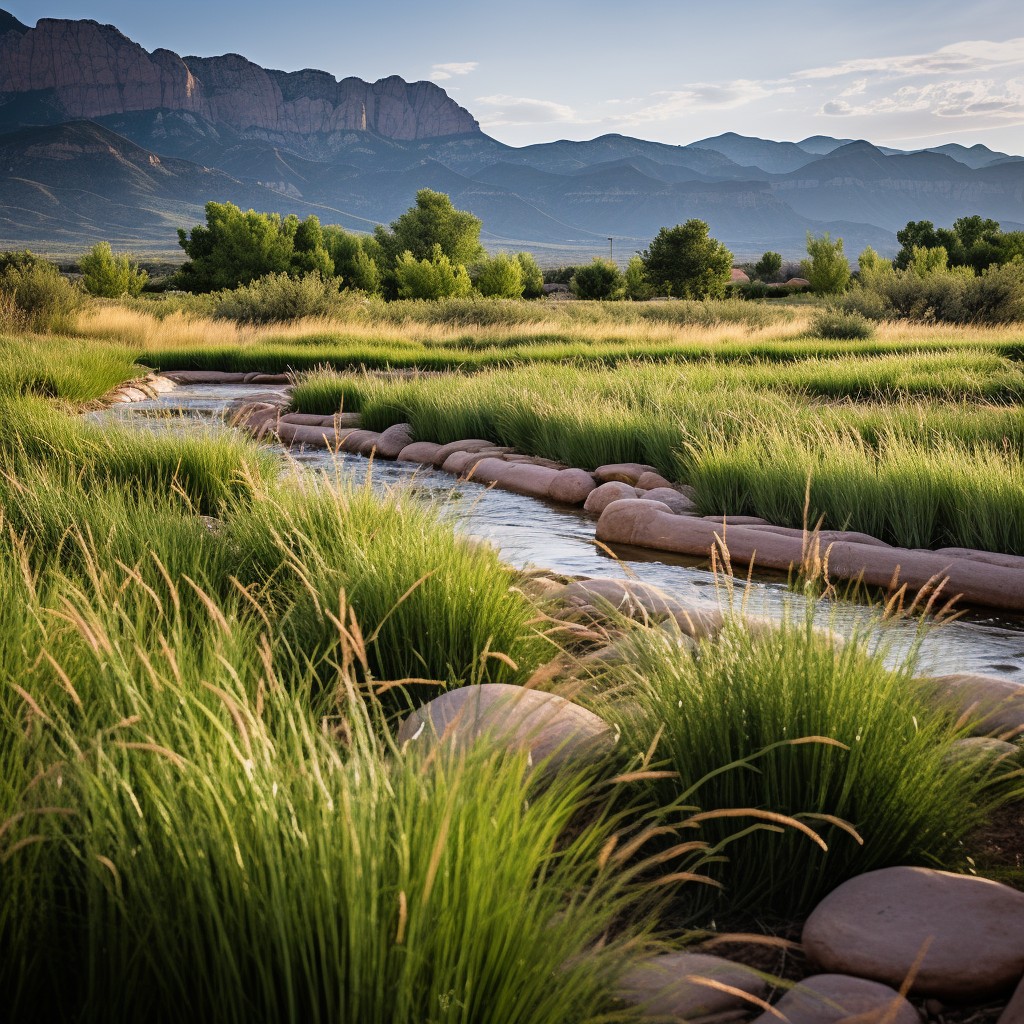
In Utah’s dry climate, water conservation is essential. Traditional sprinkler systems can waste a lot of water and are not always the best option for grass alternatives or low-maintenance landscaping.
One alternative to traditional sprinklers is drip irrigation. This method delivers water directly to the roots of plants through small tubes or emitters placed at ground level.
Drip irrigation uses less water than traditional sprinklers and reduces evaporation loss.
Another option for watering your lawn without wasting resources is rainwater harvesting. Collecting rainwater in barrels or cisterns allows you to use this free resource on your garden during dry spells instead of relying solely on municipal sources.
Consider using smart controllers that adjust watering schedules based on weather conditions and soil moisture levels rather than fixed timers that may over-water plants during wet periods.
Budget-Friendly Alternatives
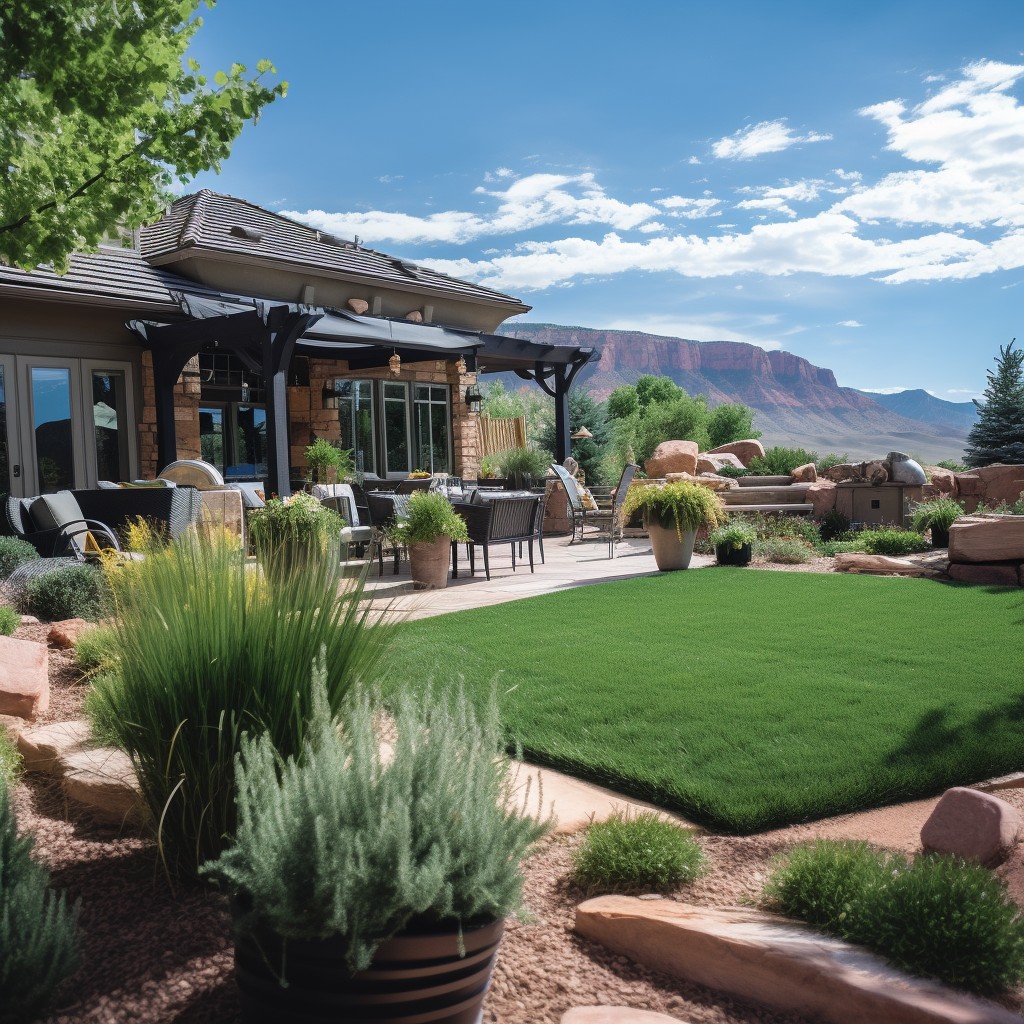
One option is to use groundcovers such as clover or creeping thyme. These plants require little maintenance and can be used in place of traditional grass lawns.
Another cost-effective alternative is artificial turf. While it may have a higher upfront cost, it requires no watering or mowing and will save you money on maintenance costs in the long run.
Xeriscaping principles can also help reduce costs by using drought-tolerant plants that require less water and upkeep than traditional lawns. Incorporating rocks, gravel, or mulch into your landscaping design can also add texture while reducing the need for expensive irrigation systems.
Eco-Friendly Landscaping
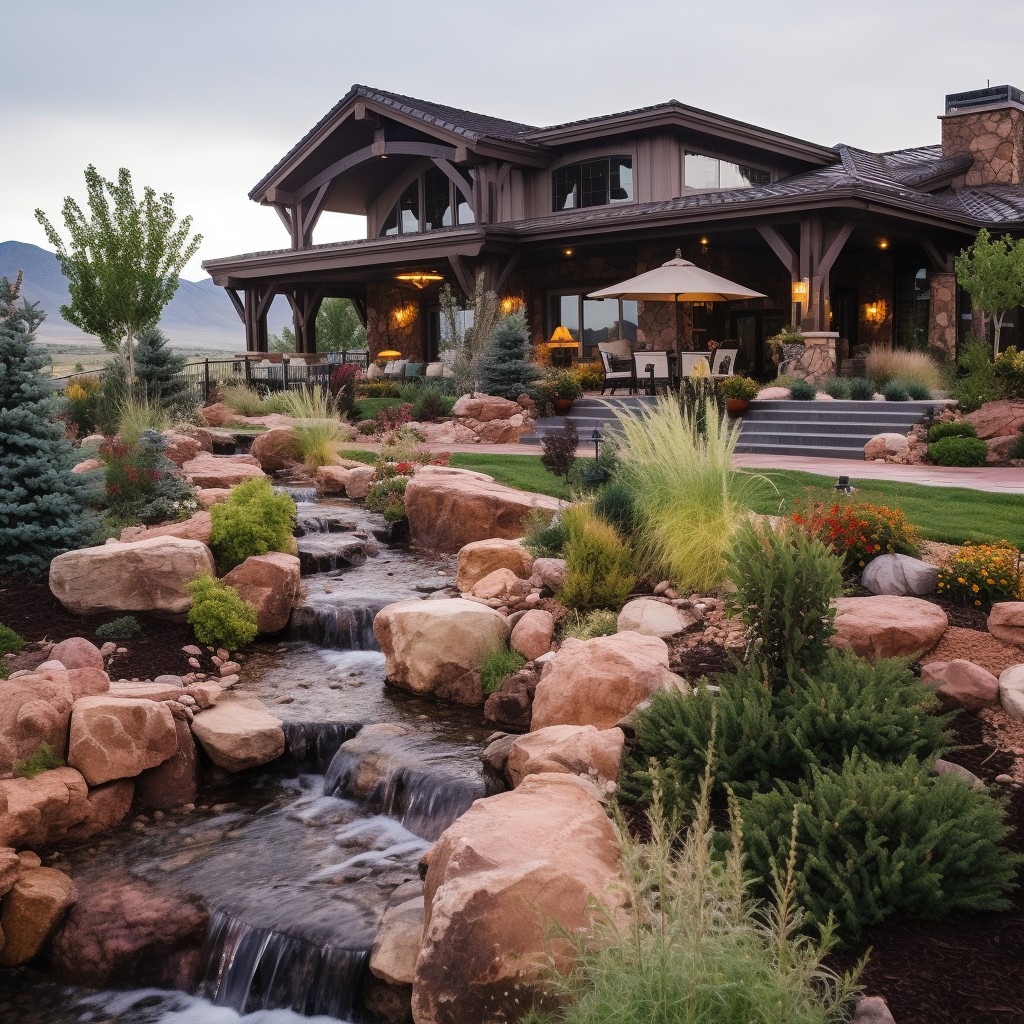
When it comes to landscaping, there are many ways you can make your yard more eco-friendly. One way is by choosing grass alternatives that require less water and maintenance than traditional lawns.
Another option is xeriscaping, which involves using plants that are native to Utah and require little water.
You can also incorporate sustainable materials into your landscape design such as recycled plastic or composite decking for patios and walkways instead of wood or concrete. Installing a rain barrel system will allow you to collect rainwater for irrigation purposes rather than relying on municipal sources.
Grass-free Lawn Ideas
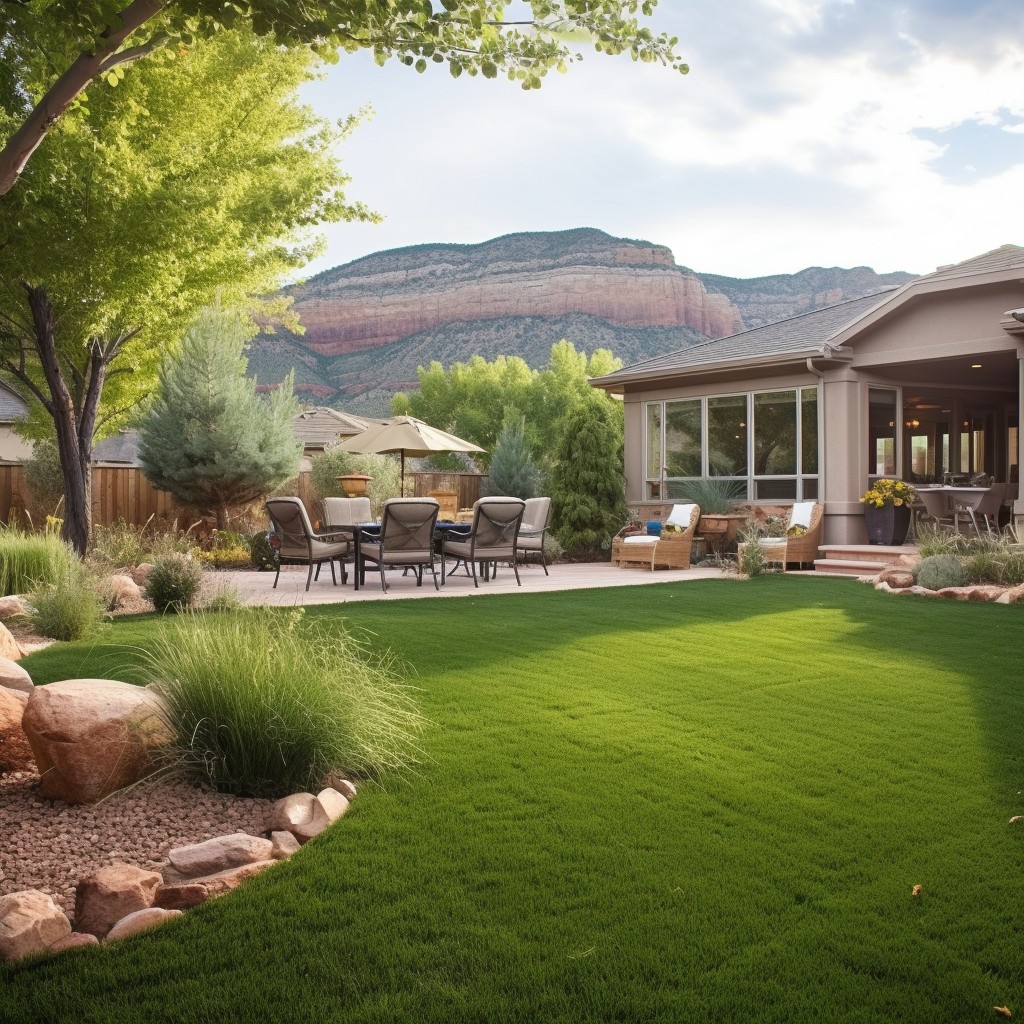
One popular choice is rock and gravel landscaping, which can add texture and color to your yard while also being low-maintenance. Another option is mulch or wood chips, which can provide a natural look while also helping with water retention in the soil.
For those who want something more unique, moss gardens are becoming increasingly popular as an alternative to traditional lawns. Moss requires little maintenance and thrives in shady areas where grass may struggle.
Another idea is xeriscaping principles that focus on using drought-tolerant plants such as succulents or cacti instead of traditional turfgrass. This approach not only saves water but creates an eye-catching landscape design that stands out from the typical green lawn.
Water-Wise Landscaping
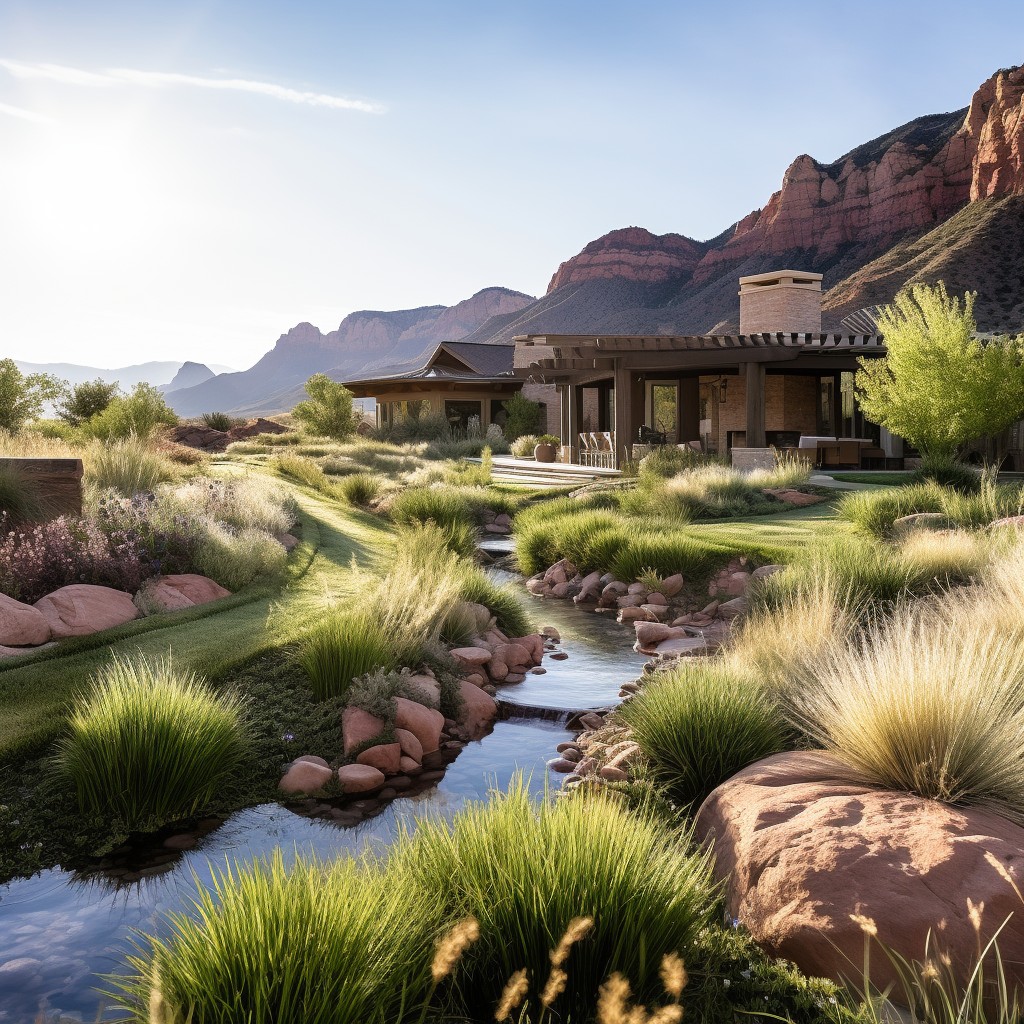
With the state’s arid climate and water restrictions, it’s essential to choose plants that require minimal watering while still adding beauty to your yard. Xeriscaping principles can help you create a sustainable landscape by using drought-tolerant plants, grouping them according to their water needs, and reducing the amount of turf grass in your yard.
One way to incorporate xeriscaping into your lawn is by selecting native Utah groundcovers such as creeping phlox or blue grama grass. These plants are adapted to the local climate and require less maintenance than traditional turfgrass lawns.
Another option for water-wise landscaping is rock gardens or gravel beds with succulents like sedum varieties that thrive in dry conditions. These low-maintenance options not only save on watering but also add texture and interest to your outdoor space.
By implementing these techniques, you can reduce water usage while still enjoying a beautiful landscape all year round without breaking the bank!.
FAQ
Can I have a clover lawn in Utah?
Yes, you can have a clover lawn in Utah, as it can be planted anywhere in the U.S.
What is the best clover for ground cover in Utah?
The best clover for ground cover in Utah is White Clover, as it is easily managed, drought-resistant, and maintains its green color even during water shortages.
What other low-maintenance grass alternatives are suitable for Utah’s climate?
Low-maintenance grass alternatives suitable for Utah’s climate include native plants such as yarrow, buffalo grass, and creeping thyme.
How does microclover compare to traditional clover for lawns in Utah?
Microclover is more drought-tolerant and requires less maintenance than traditional clover, making it a better choice for lawns in Utah.
Are native Utah plants suitable for creating an alternative lawn?
Native Utah plants are indeed suitable for creating an alternative lawn.
Recap
Liked this article? Here's what you can read next:


